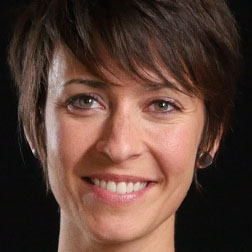As a collaboration facilitator, the vast majority of the work I do is with software development teams, which are notoriously male dominated. In the last few years, the tech industry has become hungry for more women and is throwing a lot of money at “the problem.”
Intel announced that it is investing $300M to attract and retain more women. Facebook and Apple now offer $20k egg freezing as an employment benefit so women can delay having children for their careers. And Microsoft has committed to increasing Diversity and Inclusion Training. There are also more and more scholarships available for women and minorities in the hopes of developing a more diverse talent pipeline in the tech industry.
Yet in addition to tackling this gender disparity issue from the outside and increasing the number of women in the field, there’s an invisible interpersonal dimension which also needs attention—but is hardly ever addressed.
Here is the challenge: there are underlying dynamics of how gender differences play out in teams, and if they are poorly understood or not effectively addressed they impact team performance, creativity, and culture.
Here’s what I mean—and this example isn’t from a tech industry context, but rather a personal development retreat I attended last Spring. (A context many of us might believe or hope would be more attuned to these subtle dynamics in groups.)
There we were—80 inspired learners in a long, naturally lit hall with a view of the ocean. We were engaged in a challenging developmental practice that involved uncovering a lot of the unconscious patterns running our lives so that we can be free of them and be more present in the moment.
We had two teachers—a man and a woman. The man was the primary teacher who led the first day and a half of the retreat.
Our group was 75% women and 25% men. Because I work with women in tech I am particularly sensitive to leadership influence and I watch gender dynamics closely.
So in this context, I was curious to see that women didn’t start participating until the female teacher started leading the session. Prior to that, it had only been men raising their voices to ask questions. Even though there were more women in the room, with a man in front of the room they didn’t raise their hands to participate until a woman was leading!
I also found it fascinating that when women did raise their hands, they weren’t given the same opportunities to speak as the men were. For example, the people holding the microphones determined who would speak when, and I watched a guy in the back of the room walk past two women with their hands raised to hand the microphone to another guy.
Even in a group of people committed to a rigorous developmental practice of overcoming unconscious bias, the gender of the leadership team had a huge influence on participation in the room—and it went unnoticed.
Within organizations and teams where “unconscious bias” isn’t what we’ve come together to work on, the prevalence of bias and patterns in gender relating are taking place all the time. And they influence how we show up, speak up, and engage with each other.
I continue to be amazed and grateful for the work in the Integral Facilitator® program which helps me to understand and work with majority/minority dynamics, gender dynamics and masculine/feminine qualities. For instance I often use a polarity map (a tool we learn as Integral Facilitators) to help me see a clearer path through some of the challenges my teams face regarding unconscious gender dynamics and biases.
What I view as crucial for facilitators, coaches and consultants (not to mention leaders, managers and OD specialists) is that as facilitative leaders we can be the echo chamber that amplifies the minority voices in the room. Whether those happen to be female or male. Even just one other voice echoing the minority perspective can shift the awareness and energy in a room, making it possible for group discussion and thinking to pop out of a rut and get momentum in a new direction. When we skilfully quiet the dominant voices and balance the contributions, something new can emerge. The skills I developed in the Integral Facilitator program help me do this on a daily basis.
Here’s a quick example: Last fall I led a group of business school students on a challenge course. We were on a beautiful course near the Sandy River east of Portland, Oregon. Moss grows freely on the dense trees, and walking through the course feels like being transported into a magical world.
As we were walking from one activity to the next I invited the students to play the Zen Counting Game. The Zen Counting Game involves everyone getting quiet for three seconds, then one person initiating a count to ten, where each person in the group contributes counting a number. The goal of the exercise is to count as high as possible without two people jumping in to say the same number. If two people do say the same number at the same time, the group starts back at zero.
Through the woods we heard our voices: “1, 2, 3, 4, 5, 5.” A groan from the group and back to the beginning: “1, 2, 3, 3.” Another groan. The group got to 8 a couple of times and then started to get frustrated that they could not go higher.
Then I asked everyone who had already counted in the last few rounds to be quiet and see what happened. With the group of quieter students counting we quickly made it to 58!
Team performance is greatly affected by invisible dynamics at play between majority / minority voices, and so is the large culture of teams and organizations. When we think about the balance of genders in the workplace and especially when we talk about actively bringing more females into a male-dominated industry, we have to be ready to explore what the shifting gender dynamics mean for how we interact with each other. This isn’t simply work that we do on the outside—it’s cultural. And it requires training and practice in working with the invisible interpersonal dynamics that arise in groups all the time.
Terra Soma
Collaboration facilitator, Co-founder of Navigate IT and Certified Integral Facilitator®
http://www.somacollaborations.com/



9 thoughts on “How Unconscious Bias Holds Collaboration Back”
Thanks for the blog; a lot of interesting ideas. First, I am not an Integral Facilitator, nor a leader of groups. I get the newsletter because I love Diane Hamilton’s teachings. One thing I’m curious about: is there an “and” in the facilitation that includes the majority? I listened in to a recent phone offering of Ms. Hamilton’s in which she espoused the same technique of quieting the majority to allow minorities to speak. I had an instant reaction against the idea. It just feels like now the facilitator is excluding a different group. I think we want and need to hear the minority, whether it’s gender, racial or type of personality. But excluding the majority decreases possibilities also, and incites. Seems counterproductive.
Julie,
Glad you enjoyed the blog and thanks for a great question. Yes, there is an “and” in working with majority and minority dynamics. There is some subtlety in quieting the majority voices. They are not completely quieted to exclusion, just softened so other voices have the opportunity to emerge. Majority voices will typically speak first so their perspective is in the room already. After they are heard, they are quieted so other perspectives can emerge. If you have ever watched Diane facilitate she is masterful at including multiple perspectives. And we developed these skills in the Integral Facilitator training. Quieting the majority doesn’t exclude them, just invites them into a richer conversation. I hope that brings more clarity.
Cheers,
Terra
Terra, I like your sound-image of being the ‘echo-chamber’ to amplify understated or under-represented voices. It’s a crucial responsibility of facilitators. Julie, I also share your concern about the ‘and’. My thoughts below touch on both, I think.
I’m a former geophysicist who now supports Science, Tech, Engineering and Medical (STEM) business professionals through developmental coaching and team facilitation. Most of my team building work happens via outdoor experiential action learning — a tremendously potent format-medium for both individual and group breakthroughs, accelerated growth and even real transformation.
In these client settings, I explicitly broach voice dominance. Often, by offering clients the visual Data Dial as a vivid way for us all to quickly collect and analyze a group’s complete response from everyone — including participants who haven’t been vocally self-expressing often or loudly enough for their team mates to get what’s on their minds.
The Data Dial is a simple, easy yet powerful tool for displaying responses to any question that has two answer extremes sandwiching shades of grey. It works like this: thumb straight up = one of the extremes (alternatively, 100 %); thumb straight down = the other extreme (alternatively, 0 %); any other thumb position along this range = any corresponding degree of meaning in between.
Facilitator calls the question, and asks all participants to dial in their individual responses. They simultaneously flash their thumb dials in full view of each other. Facilitator then prompts members to observe all the dial settings in their group, and sound out about their observations as needed or desired.
Here’s one example which uses the thumb Data Dial to elicit a clear performance rating from each participant:
“Based on criteria of catching, calling and appropriately handling every single rule violation that you noticed, how would you rate your TEAM’S SUCCESS at the challenge you all just performed? Where thumbs up = ‘We totally SUCCEEDED’ (i.e., 100 % success); thumbs down = ‘We totally FAILED’ (i.e., 0 % success); and thumbs anywhere else on that half-circle = any degree of success / failure in between those two extremes. Ready, set … Rate yourselves!”
I’m almost always struck by the new places that group awareness, conversation and interpersonal dynamics go, when ALL members’ perspectives and opinions are made so literally visible this way.
Happy dialing, echoing ‘and’ collaborating,
Laura
SciEnspire!
Laura,
I also love the power of outdoor experiential learning! Thank you for sharing the Visual Data Dial. Cool way to create a visual canvas available to everyone.
Yes ‘and’,
Terra
Excellent article, Terra. There is research on gender communication dating back 40+ years saying the same things. It is such unconscious behavior that few of us — even when we are sensitized to it — recognize it. Thus, it continues. One bright spot along with the Data Dial type of instrument — I’ve noticed in online courses that gender plays almost no role in the communication styles and interactions.
I participate in a lot of online courses, Judith, and seem to notice this myself, too.
Btw, one interesting effect the Data Dial seems to have is this: once they get their thumb ‘out there’ and seen by everyone else, individuals who previously talked little or not at all often suddenly start speaking up. And their more vocal team mates who previously had little or no interaction with them, often start taking real interest in their opinions and directly engaging them to learn more.
In working with hundreds of individuals and dozens of organizations, I’ve witnessed many groups quickly go into deeper candid conversations around personal frustration, conflict, ethics, values, preferences and more (with rich results), simply triggered by one of these rapid Data Dial exercises.
Thank you Terra for a thoughtful and enlightening post. I am also appreciating the discussion, including tools to efficiently include more and often missed voices.
Thank you Pete!
As always, your articulation and insight inspires me, Terra! My body tells me when the tension of invisible dynamics are at play. I just need to feel and pay attention to the sensory vibes. As a facilitator and leader I get to give voice to those silent and assumed dynamics. Disruptive, sometimes painful, energizing and tricky, but oh so helpful to the thirst for change under the waterline. I succeed and I fail. And I try again.
I had forgotten about the polarity map – great tool!